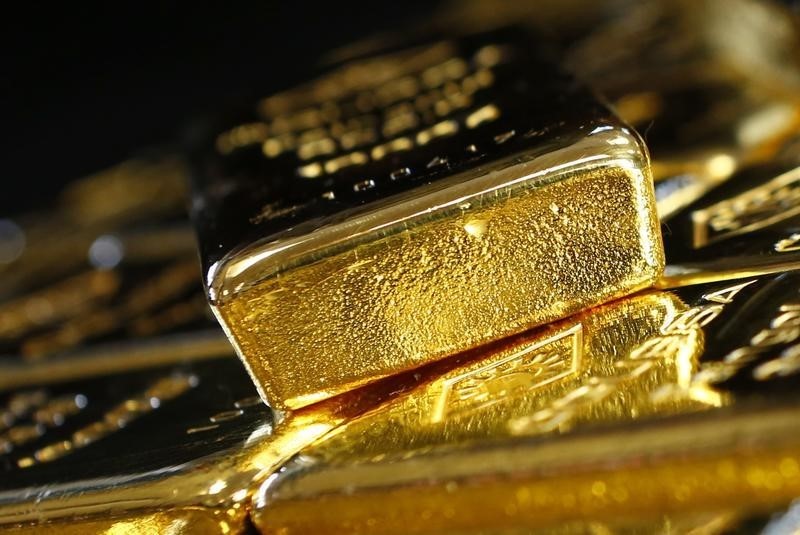By Ambar Warrick
Investing.com -- Gold prices were flat on Wednesday after logging their worst drop in a month as U.S. Federal Reserve Chair Jerome Powell indicated that a recent spike in inflation would likely see interest rates rise more than initially expected.
This saw the yellow metal reverse nearly all of its recent gains and fall near levels last seen in late-December. Gold prices also logged their worst day in over a month on Tuesday, plummeting nearly 2%.
Spot gold was flat at $1,813.39 an ounce, while gold futures fell 0.2% to $1,816.25 an ounce by 20:30 ET (01:30 GMT).
Powell said in a testimony before Congress that recent data had shown that inflation remained stubbornly high, and was likely to elicit more, steeper interest rate hikes by the Fed.
He warned that the bank could return to a sharper pace of hikes in March, which saw an increasing majority of traders begin pricing in a 50 basis point (bps) later this month.
Rising interest rates weigh heavily on metal markets by increasing the opportunity cost of holding non-yielding assets. A spike in short-term Treasury yields also furthered this trend.
Focus this week is now on the Fed’s Beige Book, due later in the day, for deeper insight into the bank’s perception of the U.S. economy. Nonfarm payrolls data for February is due on Friday, with any continued signs of strength in the labor market giving the Fed more economic headroom to keep raising rates.
Other precious metals retreated on Wednesday, following sharp losses in the prior session. Silver futures fell 0.5% to $19.102 an ounce, while platinum futures were flat at $934.45 an ounce.
The dollar firmed against a basket of currencies, and was close to reaching its highest level in three months.
Among industrial metals, copper prices rebounded after plummeting 2.6% in the prior session, as mixed trade data from China was compounded by fears of the Fed.
Copper futures were up nearly 0.5% to $3.9852 a pound.
While data on Tuesday showed that China logged a record-high trade surplus in February, the country’s imports shrank far more than expected, indicating that demand in the world’s largest commodity importer remained weak despite the lifting of anti-COVID restrictions.
The prospect of weak Chinese demand, coupled with fears of a potential recession under rising interest rates, weighed heavily on the outlook for copper prices.
